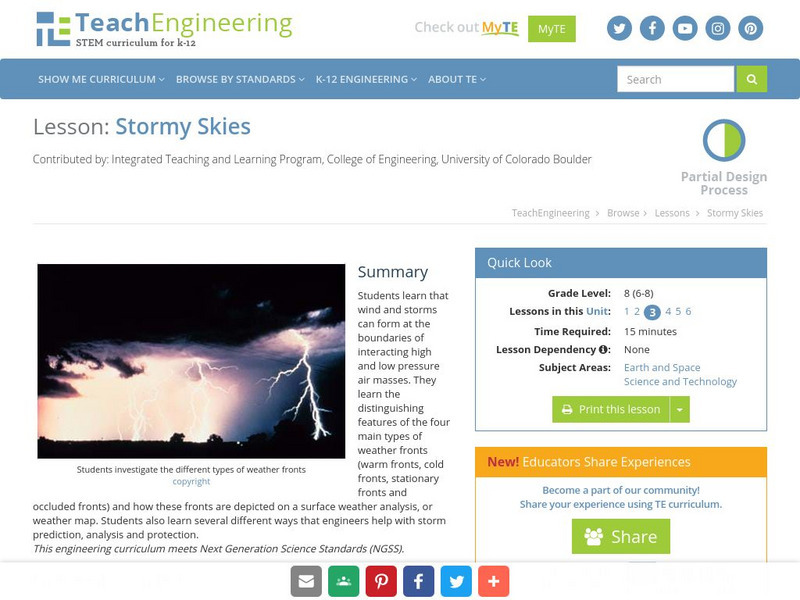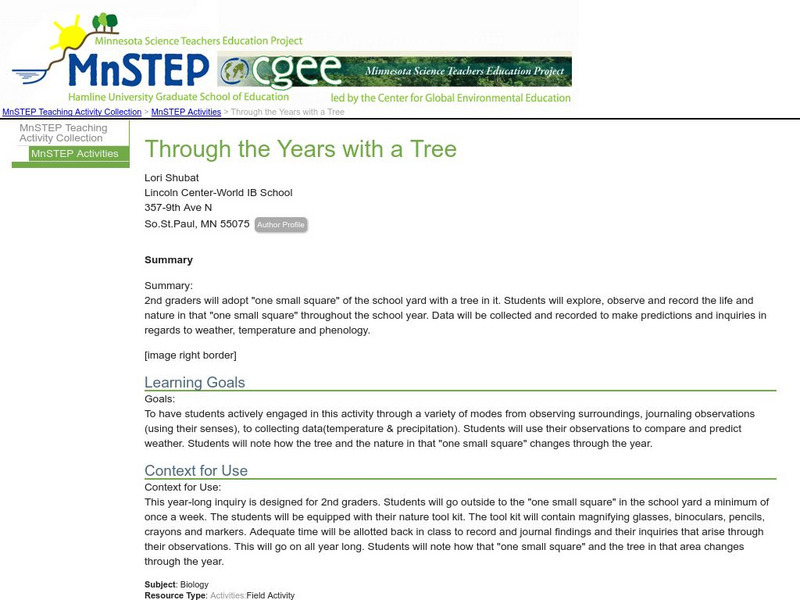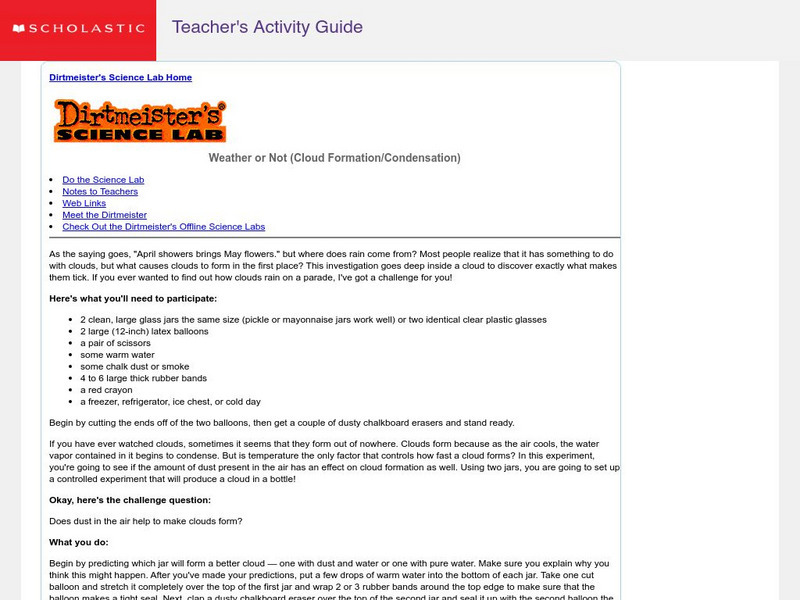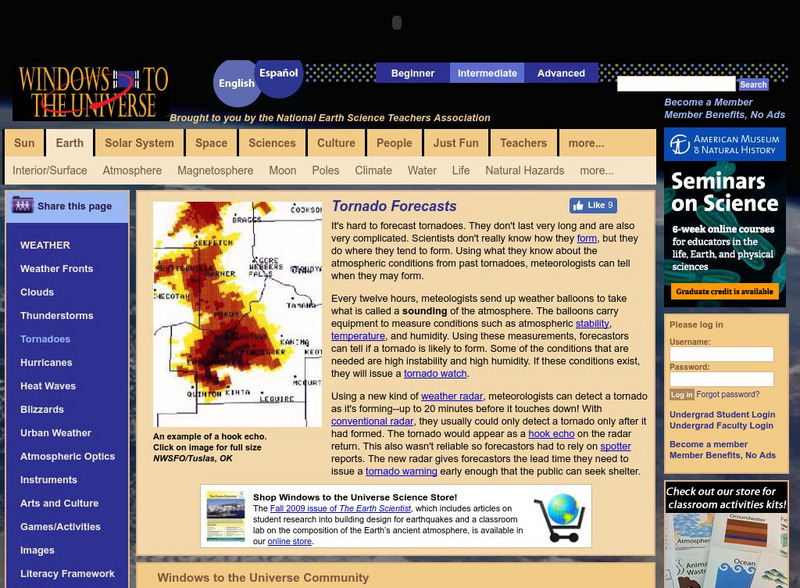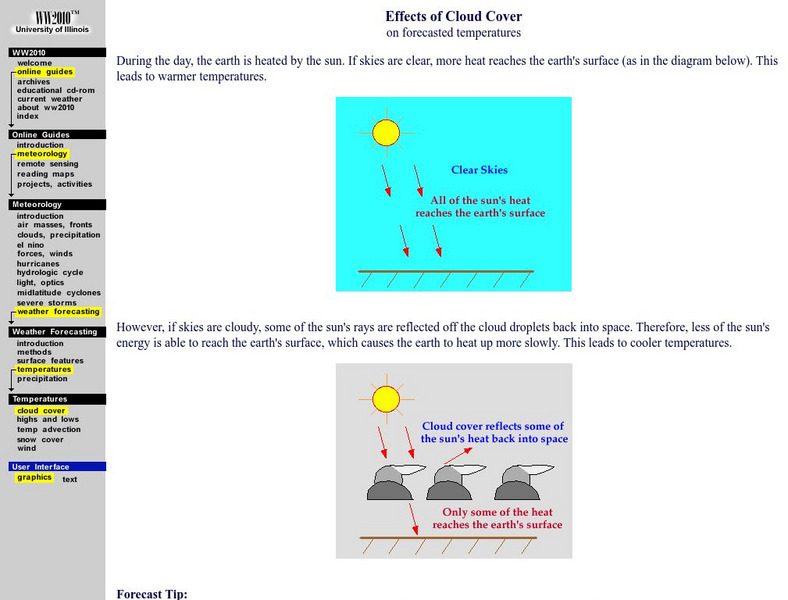University Corporation for Atmospheric Research
Ucar: Winter Storms
If you're looking for blizzard and other snow storm information, this site's worth investigating. Find out what conditions form blizzards as well as the damage they cause.
DOGO Media
Dogo News: Week of 4 18 16: Measuring Raindrops From Space
Article reports on why measuring the size of raindrops from space may help improve weather predictions. Includes video.
TeachEngineering
Teach Engineering: Stormy Skies
Young scholars learn that wind and storms can form at the boundaries of interacting high and low pressure air masses. They learn the distinguishing features of the four main types of weather fronts (warm fronts, cold fronts, stationary...
NOAA
Noaa: National Weather Service: Hail
"Imagine a baseball dropped from an airplane flying at 30,000 feet; imagine that baseball reaching speeds of 120 MPH as it falls to the ground; and imagine you're under it!" How does hail form? How big can it get? Read more here about...
Science Education Resource Center at Carleton College
Serc: Through the Years With a Tree
Students explore, observe, and record the life and nature in their adopted "one small square" throughout the school year. As they collect data, they make predictions and inquiries in regards to weather, temperature, and phenology.
Dan Satterfield
Dan's Wild Weather Page: Forecasting
Find out about the art and science of forecasting at this site from Dan's Wild Weather Page.
Curated OER
Scholastic: Weather Watch
Scholastic presents Weather Watch, where you can learn to predict the weather. Learn how to observe clouds, collect data with weather tools, investigate climate conditions, and analyze the weather. The site includes a comprehensive...
NOAA
Noaa: Storm Prediction Center
Get real time data on storms across the nation that have occurred over the past 24 hours. The data includes storm locations, severity and brief damage reports.
Geographypods
Geographypods: Hazards and Risk Management: Tropical Storms
This learning module looks at tropical storms. It explains the characteristics of a tropical storm, how they form, how they are predicted, and their frequency. Includes student tasks, graphs, videos, and an interactive animation of...
University of Illinois
University of Illinois Urbana Champaign: Trends Method in Mathematics
Site provides another method that can be used to forecast the weather: the trend method. This method is based on prior movement of the storm. Site utilizes data, charts, maps, and predictions.
PBS
Pbs Learning Media: Choosing Earth's Climate Future
Students focus on the three interconnected choices global society faces as Earth's climate continues to change -- suffer, adapt, and mitigate -- to analyze and predict current and future impacts to Earth's systems. Using videos excerpted...
Scholastic
Scholastic: Dirtmeister's Science Lab: Weather or Not
Simple experiments for exploring clouds and cloud formation. You'll find out whether dust in the air helps cloud formation and discuss how dust helps meteorologists make weather predictions.
National Earth Science Teachers Association
Windows to the Universe: Tornado Forecasts
Scientists study tornado history to help forecast future occurrances. This article explains methods meteorologists use to best predict when tornadoes might develop.
Center for Educational Technologies
Exploring the Environment : Severe Weather:hurricanes
Learn about hurricanes by analyzing data and predicting possible new hurricanes. Lots of good background and some extension activities.
NOAA
Noaa: Cpc: Hazards Assessment Brief
This Hazards Assessment from the Climate Prediction Center is intended to provide emergency managers, planners, forecasters and the public advance notice of potential hazards related to climate, weather and hydrological events. Check out...
NASA
Nasa: Hurricanes
Learn about hurricanes and how they are created. Features include video animation, the histories of the most devastating hurricanes and topics such as hurricane naming and hurricane study.
Other
K 3 Learning Pages: Web Resources Thunderstorms
Check out this comprehensive list of web resources on thunderstorms and safety. Students and teachers will benefit from the links found on this site.
Center for Educational Technologies
Severe Weather: Hurricane Watch
Hurricanes are the most powerful of storms. Using satellite images, this site allows you to plot the path of a hurricane and predict when it will strike land.
PBS
Pbs News Hour Extra: Satellites Orbit the Sun to Better Predict Solar Storms
For the first time, NASA scientists have generated a full image of the sun, front and back, using twin orbiting satellites. The new view of Earth's star will allow for the study of solar weather events like coronal mass ejections that...
Ducksters
Ducksters: Holidays for Kids: Groundhog Day
Kids learn about Groundhog Day. The history and facts about this holiday predicting the weather and the end of winter.
NOAA
Noaa: Pmel: El Nino Theme Page
The National Oceanic and Atmospheric Administration (NOAA) sponsors this El Nino and La Nina resource site that features current and historic information about these weather systems with diagrams.
Middle School Science
Hurricane Unit
In this comprehensive site you will find links to the following topics: parts of the hurricane, naming hurricanes, stages of development, rating hurricanes, online tracking of hurricanes, printable tracking maps, hurricane safety,...
University of Illinois
University of Illinois Urbana Champaign: Effects of Cloud Cover on Forecasting
This site explores the "factors to consider when forecasting day and nightime temperatures," and how cloud cover will effect these predictions.
Other
Niwa: Storms and Cyclones
Learn about storms and cyclones with this website. Understand how storms are classified and predicted. Also learn about tropical cyclones which are revolving storms that occur in the Southwest Pacific and Indian Ocean. Site focuses on...


